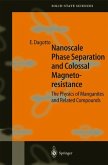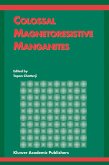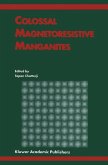The study of the spontaneous formation of nanostructures in single crystals of several compounds is now a major area of research in strongly correlated electrons. These structures appear to originate in the competition of phases. The book addresses nanoscale phase separation, focusing on the manganese oxides known as manganites that have the colossal magnetoresistance (CMR) effect of potential relevance for device applications. It is argued that the nanostructures are at the heart of the CMR phenomenon. The book contains updated information on manganite research directed to experts, both theorists and experimentalists. However, graduate students or postdocs will find considerable introductory material, including elements of computational physics.
Condensed matter is one of the most active areas of research in physics. Ev ery year new materials are discovered with properties that are as challenging as or more than those of the year before. The effort is led mainly by exper imentalists, who systematically manage to prepare compounds with exotic new properties, including complex ground states involving nontrivial spin, charge, lattice, and orbital arrangements. This work is typically carried out by a relatively small number of researchers, compared with other disciplines, and the interaction between experimentalists and theorists is quite strong. It is a real pleasure for a theorist, like the author, to have experimental data with which to test proposed ideas in short time scales. This allows for a theory-experiment cross-fertilization that keeps the field very active. These are quite interesting times in condensed matter for sure. This book is devoted to the study of a family of materials known as man ganites. As for other exotic compounds, the fast development of experiments has induced a rapid evolution of the main theoretical ideas. A considerable ef fort, both on theory and experiments, has led to the currently much-accepted notion that nanoscale phase separation is at the heart of the behavior of elec trons in these compounds. This point is described in detail in this book, with a plethora of experimental data, computer simulation results, and analytic calculations supporting that description.
Condensed matter is one of the most active areas of research in physics. Ev ery year new materials are discovered with properties that are as challenging as or more than those of the year before. The effort is led mainly by exper imentalists, who systematically manage to prepare compounds with exotic new properties, including complex ground states involving nontrivial spin, charge, lattice, and orbital arrangements. This work is typically carried out by a relatively small number of researchers, compared with other disciplines, and the interaction between experimentalists and theorists is quite strong. It is a real pleasure for a theorist, like the author, to have experimental data with which to test proposed ideas in short time scales. This allows for a theory-experiment cross-fertilization that keeps the field very active. These are quite interesting times in condensed matter for sure. This book is devoted to the study of a family of materials known as man ganites. As for other exotic compounds, the fast development of experiments has induced a rapid evolution of the main theoretical ideas. A considerable ef fort, both on theory and experiments, has led to the currently much-accepted notion that nanoscale phase separation is at the heart of the behavior of elec trons in these compounds. This point is described in detail in this book, with a plethora of experimental data, computer simulation results, and analytic calculations supporting that description.
From the reviews: "Dagotto has authored a fascinating book that comprehensively presents both the physical properties of manganites and our theoretical understanding of these unusual properties. ... the publishers have, as usual, produced a durable volume which is well bound, nicely typeset, and nicely illustrated with many useful figures ... . This is a volume that will prove useful for many years and that will also survive extensive use ... . As such it is highly recommended to the reader who wants an in-depth view of the manganites." (Gary J. Long and Fernande Grandjean, Physicalia, Vol. 57 (2), 2005) "The book of E. Dagotto, being an original introduction to the physics of manganites, is focused mainly on the problem of nanoscale phase separation of these materials. ... The book ... provides a solid knowledge of the foundations of the correlation effects and the present status of the field. ... this book will be also of a great value for researchers already working in the field of strongly correlated systems as well as for these who are interested in new materials for the spintronics." (G. B. Teitel'baum, Applied Magnetic Resonance, Vol. 24 (2), 2003)








